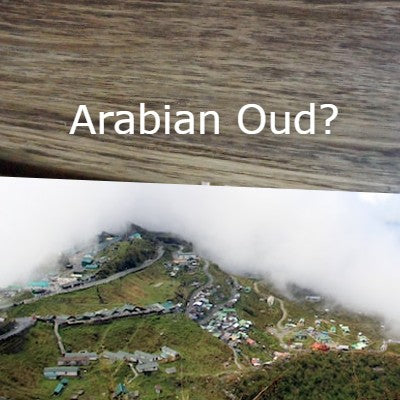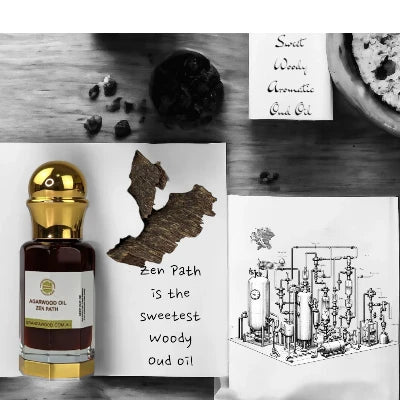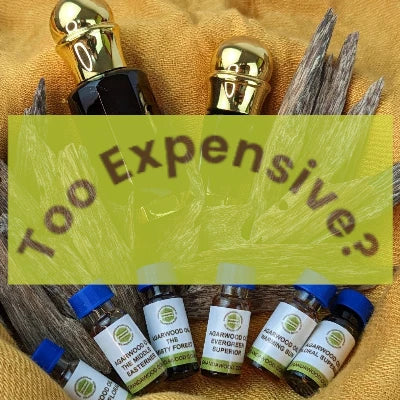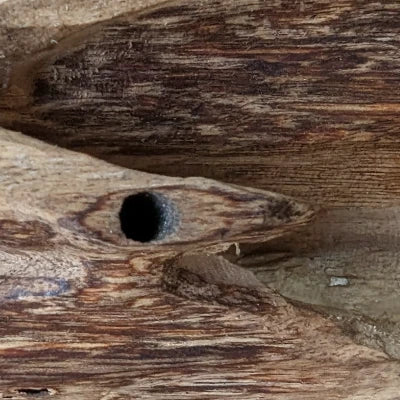Menu
-
-
F.A.Q
- How to identify genuine agarwood chip, natural or cultivated
- How to identify oil injection / absorption fake agarwood beads
- How to know if there are more than one oil in your oil
- How to make your wood bracelet or mala darker
- How to tell if an Agarwood bead sinks WITHOUT sinking it under water?
- How does back flow incense work and how do you burn it?
- Where to start if you don't know what agarwood is ?
- Why are you losing money if you buy seeds and plants?
- Which agarwood incense should I choose?
- Frequently Asked Questions
- Agarwood Related Articles
- Shipping
-
SHOP - Agarwood
-
SHOP - Other Fragrant Wood
-
SHOP - Incense Holder and Burner
-
- FREE guide book
- Testimonials
- "Why did you buy this?"
- Contact us
- About Us
- +61430284329
- Login
-
English


Does Arabian Oud come from Arab countries?
February 25, 2023 5 min read
Some people asked me:
- "Is Arabian Oud from Arab countries?"
- "Why is your Vietnamese Oud more expensive than Arabian Oud?"
So I thought today I would address these two questions.
Before I begin, I would like you to have a quick read of my disclaimer
*Disclaimer*
It is important to note that the term "Arabian Oud" is a general term used to describe a type of perfume that contains Agarwood, and does not necessarily refer to a specific brand. The term "Arabian" is an adjective that typically refers to things or locations related to Arabia, while "oud" is the Arabic word for agarwood. Therefore, while the use of the term "Arabian Oud" is common in the fragrance industry, it is not specific to any particular brand or product.
Does Arabian Oud come from Arab countries?
When it comes to Arabian Oud, there is a lot of confusion about where it actually comes from. Many people believe that it originates from Arab countries or the Middle East.
However, the truth is that while Arabian Oud may be manufactured in Middle East countries but the Oud (Agarwood) actually comes from South East Asia. This region has produced this type of wood for centuries and has become popular in other parts of the world. If you are looking for Arabian Oud perfume, you will find similar products worldwide as many people sell them. But if you want to experience Agarwood yourself, come to South East Asia countries. Vietnam is one of them, and it is home to one of the best Agarwood growers in the world.
Why is your Vietnamese Oud more expensive than Arabian Oud?
This question has two issues.
The first issue:
There is a common misunderstanding about the term "Arabian Oud".
While Vietnamese Oud and Cambodian Oud refer to Agarwood from those respective countries, "Arabian Oud" does not necessarily refer to Agarwood from Arab countries.
This is because Aquilaria trees, which produce Agarwood, do not grow in the Middle Eastern climate. In the case of "Arabian Oud", it can actually refer to other products like Arabian Oud Attar, Arabian Oud perfume, or Mukhallat.
The second issue:
You could ask me the opposite: Why is Arabian Oud more expensive than Vietnamese Oud?
You and I both know the cost of producing the product, including raw materials, labour, and overhead, is a key factor in setting the price. If the production costs are high, the product's price is also likely to be higher.
In this instance, Vietnamese Oud (*) refers to the raw material, while Arabian Oud refers to the final product.
It means if the brand of the final product is well-known and contains genuine high-cost pure Oud, then the Arabian Oud will be more expensive than the Vietnamese Oud (*)
But
If the manufacturer uses synthetic to make Arabian Oud, then the cost will be lower.
(*)You can replace Vietnamese Oud with Cambodia Oud, Filipino Oud, Indonesian Oud, Chinese Oud... you get the idea
The Origins of Oud
Aquilaria trees, which will develop Agarwood when wound and infected, are native to South East Asia. The highly fragrant wood can be found in China, India, Vietnam, Indonesia, Malaysia, Philippines, Papua New genuine and Vietnam. In Australia, I think there are wild Aquilaria trees. However, Australians love sustainable ways of living so Westcorp an Agarwood plantation in Western Australia, has been growing Agarwood for years.
In the wild, Aquilaria trees grow mostly in tropical forests at an elevation of 500 - 1,000 meters above sea level.
The use of oud can be traced back to ancient civilizations such as the Egyptians, who used it for religious and medicinal purposes. It is also known as "aloes" in the Bible
Oud was also highly valued in ancient China, where it was used in traditional medicine and as a high-end perfume ingredient.
In the Middle East, oud has a long and significant history. It has been used for centuries as an ingredient in traditional Arabic perfumes, which combine Agarwood oil with other essential oils. This perfume is known as Arabic attar, which is widely used in Middle Eastern countries. Oud oil here acts as a fixative.
This means that when used as an ingredient in a fragrance, it can help the scent last longer on the skin and fabric. The fixative properties of agarwood oil are due to multiple aromatic compounds, which can slow down the evaporation of other perfume ingredients, thus prolonging the fragrance's staying power.
Agarwood s popularity spread worldwide thanks to the Silk Road trade routes.
The Silk Road was a vast trade route network connecting East Asia with the Mediterranean and Europe. It was named after the valuable commodity traded along these routes: silk. However, many other goods were also traded, including spices, precious metals, gemstones, tea, and agarwood, which was highly valued for its unique fragrance. The Silk Road played a significant role in the spread of culture and ideas and the exchange of goods, profoundly impacted the economies of the regions it connected.
The Silk Road trade routes facilitated the spread of Agarwood from Southeast Asia to the Middle East, Africa, and Europe, where it became a highly sought-after and prized fragrance ingredient.
Since the Islamic Golden Age, Arab Attar has been a key part of perfume-making in the Middle East. It is renowned for its spiritually-enlightening aroma, and many Middle Easterners use it during their weekly Jummah Prayer at Mosque every Friday.
Oud (Agarwood) oil is as popular today as ever, with many luxury fragrance brands incorporating it into their collections. It can be genuine or synthetic, and the choice between them lies in the hands of the customer to decide which suits them best. Demands will drive supplies, right?
Oud has also become increasingly popular in the Western world, with many seeking its rich and exotic scent.
Agarwood has a long and fascinating history closely tied to the Middle East and the ancient trade routes that connected the region to the rest of the world. Its uses have evolved from its role in ancient civilizations to its modern-day popularity as a luxury fragrance ingredient. Oud remains a highly valued and sought-after scent, and its popularity is unlikely to wane anytime soon.
In summary, Arabian Oud has a rich history closely tied to the Arab countries. It mainly refers to Attar (Mukhallat). Oud (Agarwood) oil refers to the final product of hydro distillation, steam distillation or Co2 extract of the infected Aquilaria wood (Agarwood). Currently, the Aquilaria trees mainly distribute in South East Asia countries where they are being cultivated to meet the demands.
Leave a comment
Comments will be approved before showing up.
Also in News

Anoint with The Zen Path, and you will never yearn for the artificiality that numbs the senses
March 03, 2024 2 min read

You say: “Your Agarwood is too expensive”. Let’s Reason Together - about Price
February 14, 2024 8 min read
